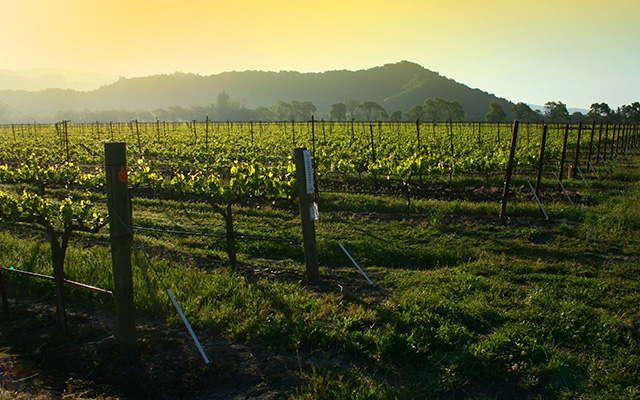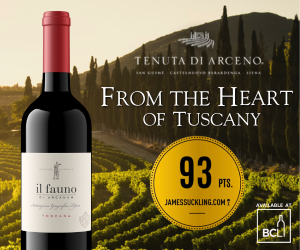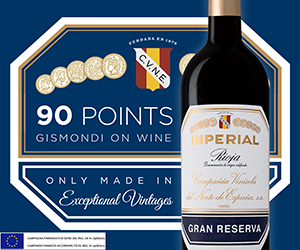I've spent the last two weeks walking, cycling, flying and ballooning over a number of vineyards in British Columbia and California, hoping to gain more insight into the question of whether site matters.
By the time you read this, I will be cutting a swath across the Rhone Valley, from one appellation to another, trying to understand whether being unique is the final allure of wine.
I've met many people who tell me one wine is the same as another to which I reply, you mean the same way humans are all the same. What it all comes down to is nuances and whether or not you care to recognise them and more importantly in the case of wine, you ate willing to pay for them.
If you really want to understand unique sites and their stories you must be curious. But you don't need to be a connoisseur of wine to understand that every garden has its peculiarities. Think about your home garden or even a balcony planter. Facing south and south west in the northern hemisphere means you receive warmer earlier and longer than sites that face north. That speaks to place and orientation.
Once you know where the sun falls and where temperatures vary on your site you can plant lettuce in the shade and tomatoes in the sun. If you are really observant, you could track where the frost is last to appear and the snow is the first to melt and you will have identified the warmest location in your garden. All useful planting information. Vineyards are no different.
I visited the Mission Hill Perpetua Chardonnay vineyard at the border in Osoyoos last week. On first blush, you would think that being so far south in the valley it would be way too warm a site for chardonnay, but the site is oriented north, away from the blistering heat of the day. The layout allows ripening the fruit fully without baking it and the result is a fresh, nuanced, chardonnay that belies its Osoyoos roots.
Later the same day I moved 123 km to the north, to East Kelowna, a region where Mission Hill is growing the very finicky pinot noir. Here the much cooler sites, collects late-day sun to the west to add a touch of ripeness and fullness to an otherwise earthy, red fruit-scented pinot. There is a mix of clones and root-stocks and very sophisticated trellising techniques that all play a role in the final outcome of the fruit.
Attention to detail, science and good old-fashioned observation and fruit tasting is creating a quality and a taste that is slowly linking itself to the site. Is East Kelowna different than Osoyoos, yes. Does it show in the wine, yes. Should it be recognized on the label, yes. What are we waiting for? At this point we seem more interested in celebrating valley-wide mediocrity than site specific greatness. However, these things take time and I mean generations, not years.
I spent three intensive days on this past weekend in one of the most heralded vineyards in California's Oakville approved viticultural district in Napa Valley. To Kalon Vineyard, first planted in 1868, lays over a mix of gravelly loams at the sloping base of the Mayacamas Mountains and alluvial and clay loams that spread east on to the valley floor. The site is home to the most important Robert Mondavi labels: Cabernet Sauvignon Reserve and Oakville District Cabernet Sauvignon, and the remarkable Fumé Blanc Reserve.
To Kalon is bathed in the warm morning sun as it climbs above the Vacca Range to the east of Napa Valley but remains cool and protected from the heat of the late-day sun by the Mayacamas Mountains to the west. Here the orientation of the rows, the trellising, the density, the mix of dry-farmed and drip irrigated vines and most important, the grape varieties -- predominately cabernet sauvignon with merlot and cabernet franc and sauvignon block -- all contribute to the final quality of the fruit.
To Kalon is as close as you can come to what the French would term a Grand Cru site, a term given to the ultimate home of grapes that effortlessly tell the story of their site. The Mondavi folks talk endlessly about the To Kalon balance, about the finesse with power the wines possess, the tension of acidity and the softness of the tannins. What they are really saying is place matters and it's exactly the conclusion we should arrive at whether we divide the Okanagan Valley into sub-regions in the years to come or not.
Finca Los Primos Chardonnay 2012, San Rafael, Mendoza, Argentina
Price $11 | Score 86/100
UPC: 07790703007606
Buttery, earthy, resin, lemon, baked pear aromas. Fresh, juicy, slightly sweet and oily with buttery, baked apple, honey, matchstick and citrus flavours. Easy to like for $11.
Le Jaja de Jau Sauvignon Blanc 2012, Cotes de Gascogne, Sud-Ouest, France
Price $15 | Score 87/100
UPC: 003119460000844
Jaja, or "everyday" wine in the local dialect, aptly describes this white. Dry, fresh and lip-smacking attack with grassy, citrus, grapefruit, jalapeno flavour. The wine spends six months in stainless steel before release and sees no wood. Most shellfish work here although oysters would be my first stop. Fine value too.
Mission Hill Pinot Blanc Reserve 2012, Okanagan Valley, British Columbia, Canada
Price $19, winery-direct, VQA stores | Score 88/100
UPC: 776545991188
Now a single-vineyard, the reserve Pinot Blanc is grown over gravel and sandy loam soils in east Kelowna at the Lakeshore Vineyard Estate. The wine has undergone an impressive mineral, tangerine, guava transfusion. Floral and fresh with a waft of almonds, this is a delicate white for simply prepared seafood dishes. There is plenty of citrus and cool pear/yellow fruit flavours to entertain. Perfect oak treatment; you hardly notice it.
Graffigna Centenario Malbec Reserve 2011, San Juan, Argentina
Price $14.50 | Score 86/100
UPC: 00852832105527
Open floral spicy, black-cherry nose with leather and licorice. The attack is fresh with a dry, savoury earthy, black cherry fruit flavour. A simple, straight-up style barbecue red for flank steak and or hamburgers.
Santa Carolina Cabernet Sauvignon Reserva 2011, Valle del Colchagua, Chile
Price $15 | Score 86/100
UPC: 7804350596359
Cassis, spicy, minty, tobacco, peppery, saddle leather, earthy aromas. Fresh, elegant, juicy, slightly tannic palate with cassis, leather, earthy, smoky, bay leaf, olive and cedar bark flavours. Solid, rustic, easy-sipping style for summer barbecues.
Gianni Brunelli Rosso di Montalcino 2010, Montalcino, Siena, Tuscany, Italy
Price $35 | Score 91/100
UPC: 795898001825
The 2010 is a good as it gets for Rosso and now, with a bit of bottle age, it really makes a statement. Look for an intense nose of black cherries and with a white pepper spice and mushroom. The palate is similar in flavours with terrific intensity and refined silky tannins. It's perfect for drinking now. The Rosso is always made from a mix of vineyards and aged six months in oak casks, allowing one to approach the essence of the property at a much earlier drinking window.

 quicksearch
quicksearch






